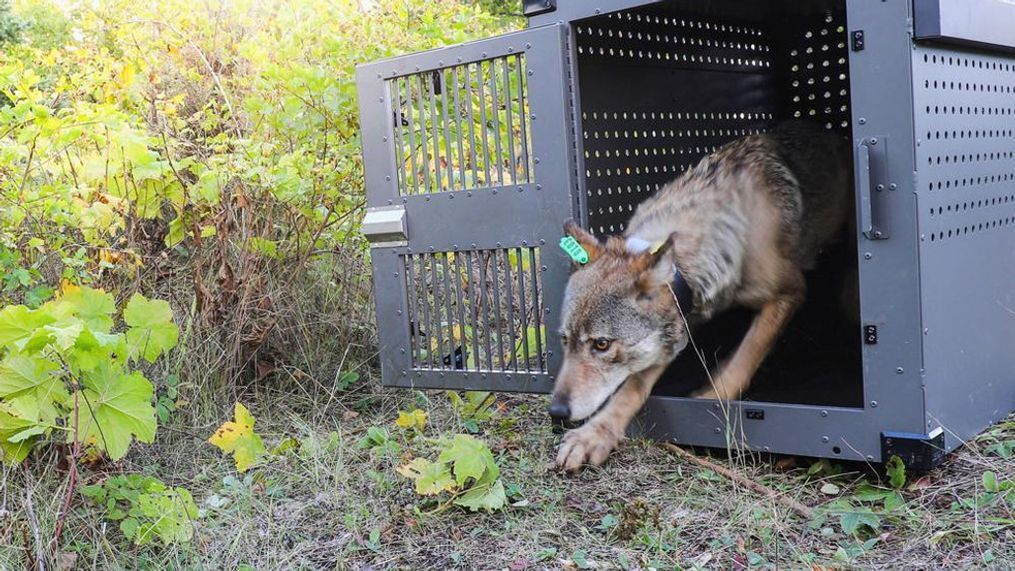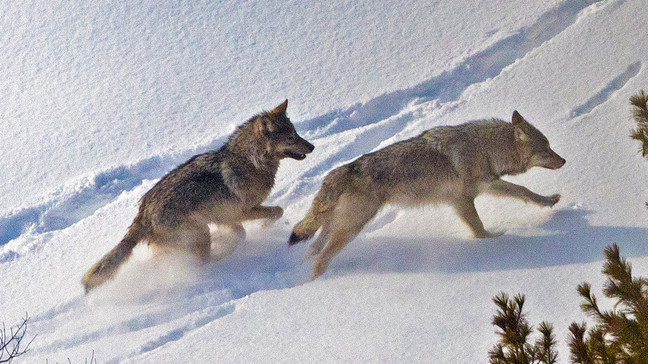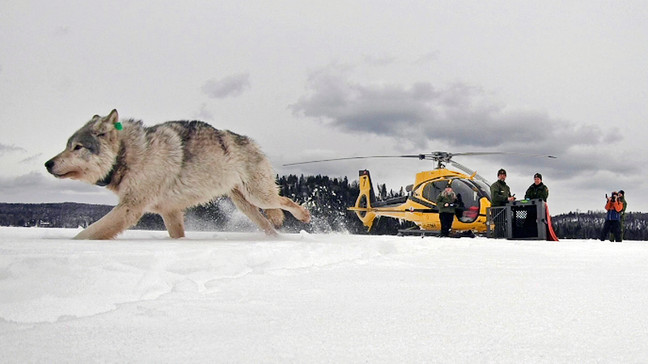cheeser
Well-known member
Remote Lake Superior island wolf numbers are stable but moose population declining
ciated Press
Tue, April 30th 2024 at 11:43 AM
Updated Tue, April 30th 2024 at 11:48 AM



4
VIEW ALL PHOTOS

FILE - This Sept. 26, 2018, file photo provided by the National Park Service shows a 4-year-old female gray wolf emerges from her cage as it is released at Isle Royale National Park in Michigan. (National Park Service via AP, File)
...
Researchers forced to cut short an annual survey of wildlife on a remote Lake Superior island this winter due to unusually warm weather announced Tuesday that they managed to gather data that shows the wolf population is stable.
Isle Royale is a 134,000-acre (54,200-hectare) island situated in far western Lake Superior between Grand Marais, Minnesota, and Thunder Bay, Canada. The park is a wildlife biologist’s dream, offering a rare opportunity to observe wolves and moose acting naturally without human influence.
Scientists have conducted an annual survey of the island's wolves and moose since 1958. It's been going on every year except for 2021, when the pandemic forced researchers to cancel.
Researchers typically conduct aerial surveys of the island to develop population estimates and observe animal behavior. The island doesn't have a landing strip so the scientists use skiplanes that can land on the ice surrounding it.
A team led by Michigan Tech University researchers was two weeks into this year's seven-week survey in January when unusually warm temperatures left the ice around the island unsafe for their planes to land. They were forced to evacuate the island and could not return.
Data the team gathered before they left shows the wolf population stands at 30 animals, down from 31 animals last year but up from 28 in the winter of 2022. The scientists said they believe the wolves have divided themselves into four packs, with one pack numbering at least 13 wolves. At least one wolf appeared to be living alone.
The moose population, meanwhile, stood at 840, down 14% from last year. Overall, the moose population has declined by almost 60% since 2019, when the population peaked at a little more than 2,000 animals.
In past years, most moose died from starvation, the scientists said. Moose can eat up to 40 pounds of vegetation daily and with low wolf numbers, the population grew unchecked and the creatures ate themselves out of food. But this year's decline is likely linked to wolf predation, they said.
BE THE FIRST TO COMMENT
And fewer moose are having calves, the team said. Less than 6% of the moose the researchers observed this winter were calves. That's higher than last year's estimate of 2%, but still far below the long-term average of 13%.



